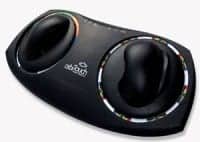During the winter holiday season there are many warnings in the news about preventing house fires caused by Christmas trees and faulty electrical wiring. A lesser known fact is the risk of head injury related to hanging and taking down Christmas decorations. “Given that ladders contribute to nearly 20,000 head injuries a year, it is not surprising that there would be this documented head injury trend in December and January when people are using ladders to decorate their homes,” said Gail L. Rosseau, MD, a Chicago-area neurosurgeon.
According to the American Association of Neurological Surgeons (AANS), Rolling Meadows, Ill, in 2009, an estimated 1.5 million people were treated in US hospital emergency rooms for head injuries related to common products found inside the home. An additional 100,000 people were treated for head injuries related to porches, fences, yards, gardens, garages, and workshops. The top 15 categories saw spikes in the numbers of injuries treated in 2009 compared to 2008, most notably floors, with an increase of 81,000 injuries. While Christmas decorations do not rank as a leading cause of head injury, falls on ice are very common.
Every year an estimated 2.8 million children and 2 million people age 65 and older are treated at US hospital emergency rooms for accidental falls. Accidental falls are the leading cause of nonfatal injury among Americans of all ages. Among Americans age 65 and older, falls are the leading cause of fatal injuries, half of which are attributed to a traumatic brain injury suffered during the fall. “A moment of distraction, hastiness, or carelessness can lead to a life-altering or even fatal head injury, but most injuries can be prevented by taking a few simple precautions,” said Rosseau, in a statement.
The following 15 home-related categories contributed to the highest number of estimated head injuries treated in 2009 (based on CPSC statistics).
1. Floors or flooring materials – 379,049
2. Stairs or steps – 166,960
3. Beds or bedframes (other or not specified) – 147,052
4. Tables (not classified elsewhere) – 92,425
5. Ceilings and walls (completed structure) – 86,170
6. Chairs (other or not specified) – 75,593
7. Bathtubs or showers – 48,972
8. Cabinets, racks, room dividers, and shelves – 48,022
9. Baby products (all categories combined) – 43,287
10. Doors (other or not specified) – 41,097
11. Sofas, couches, davenports, divans – 39,016
12. Desks, chests, bureaus, or buffets – 35,040
13. Rugs or carpets (not specified) – 25,209
14. Ladders – 19,978
15. Toilets – 18,578
AANS Injury Prevention Tips Inside the Home
- Secure loose electrical cords and put away toys and any other items that are lying around.
- Do not use recalled products – discard or take back to the store.
- Keep chairs, cribs and other furniture away from windows.
- Use safety gates and install window guards.
- Buy bath mats and rugs with slip-resistant backing and secure them.
- Do not walk on slippery, freshly washed floors and avoid floor waxes.
- Install grab bars and handrails if you are frail or elderly.
- Improve the lighting in your home; dim lighting can increase the risk of falls.
- Install night lights in halls and bathrooms, and keep a flashlight near your bed.
- Store products in easy-to-reach places; use stepstools/ladders only when absolutely necessary.
- Wear proper shoes with slip-resistant soles.
AANS Injury Prevention Tips Outside the Home
- Inspect and remove debris and ice from walkways, driveways, porches, and yards.
- Inspect and remove debris from lawns before mowing or gardening.
- Store outdoor equipment and tools properly.
- Make sure that ladders are stable and secure before using them.
- Do not use broken equipment or tools.
- Install outdoor handrails if elderly or frail.
- Do not let children engage in activities inappropriate for their age.
- Supervise younger children at all times.
- Never drive while under the influence of drugs or alcohol or ride as a passenger with anybody else who is under the influence.
[Source: AANS]




